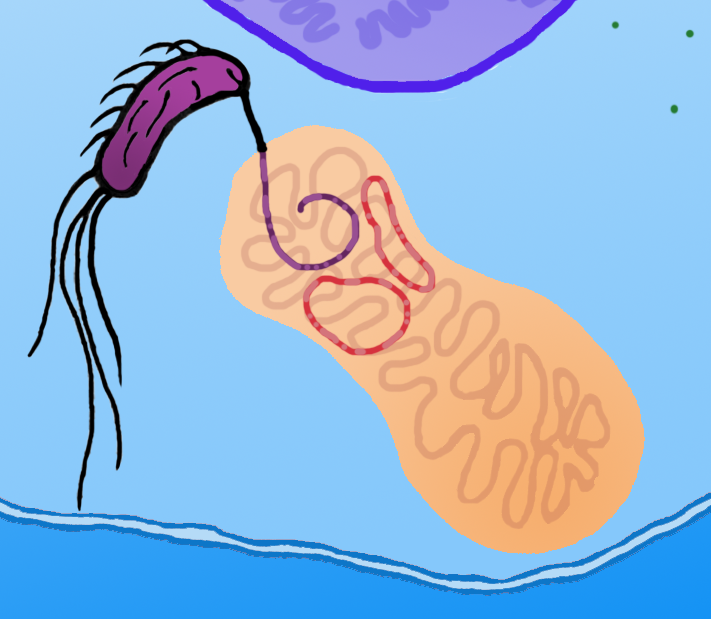Team:Warsaw/Project/conjugation
From 2009.igem.org
Conjugation with mitochondria
Conjugation with mitochondria is one of ideas how to use our BacInVader system. This is based on some publication showing the ability of E.coli to conjugate with eucaryotic mitochondira in vitro.
Theoretical basis of mitochondrial transformation
Electron transport chain functioning can be impaired by a variety of defects on the DNA level: not only point mutation and local deletions in genes encoding proteins of the chain, but also deletions of larger fragments or even of the whole mitochondrial genome (mtDNA). Correct mitochondrion contains 2 to 10 copies of mtDNA. Defects in mitochondrial DNA result in severe medical disorders especially in tissues which require large amounts of energy (such as nervous and muscle tissue). Effects of this impairments are neuro and myopathies [20]. The standard therapy based on bypassing interrupted pathways does not apply under these circumstances. Administration of enzyme cofactors and other metabolically active substances is not effective and may be applied only as supplementary therapy. We are forced to seek novel treatment strategies to cure patients suffering from mitochondrial disorders [7]. Currently the most commonly used method of mitochondrial transformation is the "gene gun" approach which is based on delivery of metal beads coated with DNA into the cell. This method is mostly limited to plants and fungi and has low therapeutic potential [7]. Current mammalian mitochondrial transformation techniques like electroporation also have serious limitations. Whole process takes place ex vivo and causes irreversible damage to the mitochondrion which make its efficient reintroduction into the cell almost impossible. The conjugation between bacteria and mitochondria is free from these side effects. Moreover, this phenomenon has been preformed in vitro.[22]. More recently a conjugation between two strains of bacteria within the cytoplasm of a mammalian cell has been observed . These findings suggest that conjugation between a bacterium and a mitochondrion is feasible [10].
Details
To locate the copy of the mitochondrial genome into bacterial cell the pBACrNESd plasmid will be used. It is built basing the Bacterial Artificial Chromosome. Replication origin (ori R6K), kanamycin resistance gen (kanR) and replication complex genes (repE, parA, parC) from pBACrNESd plasmid will be fused with origin of transfer (oriTF) from natural conjugative F plasmid. Unique restriction site will be introduced into the mitochondrial genome by PCR reaction and the described construct will be inserted into mitochondrion. To enable conjugation proteins encoded on RP4 plasmid (Tc, MuKm, Tn7) will be placed in the cytoplasmic operon. These genes are responsible for pillus formation and transport of single stranded DNA. The cell with this system will conjugate with any structure surround by lipid bilayer. We will prepare mitochondrial DNA deficient cells using a previously described procedure [2]. The occurrence of conjugation will be confirmed by PCR reaction specific for sequences added to mitochondrial DNA. The origin of the DNA will be determined by analysis of restriction patterns. The expression of mitochondrial genes will be confirmed by semi-quantitative PCR [2].
 "
"
